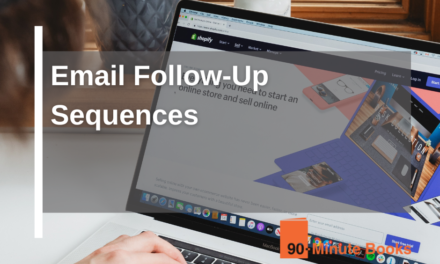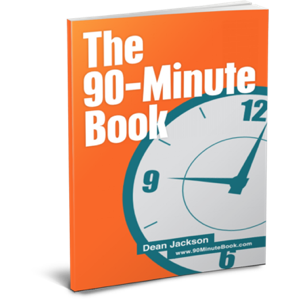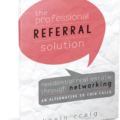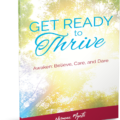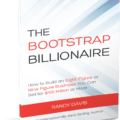Nathanial Hawthorne, the acclaimed American author of the 19th century, famously declared that “composing simple to read is incredibly difficult writing.” The same can also be applied to crafting email content that generates sales. The most successful email writing is outstanding because it almost appears non-existent. It doesn’t feel like marketing or sales. It’s personal. It’s compelling.
While that sounds easy, it’s damned hard.
It is not necessarily the case that there is only one proper way to complete a task, despite what others may think. We surveyed a group of marketers to identify if abbreviated or extended emails generated more effective outcomes. Although most marketers report that shorter emails yield better results, it does not necessarily mean that longer emails are ineffective in generating conversions.
Approximately 30% of marketers state that email length is unimportant. If the contents of your message are well-written, recipients will not worry about the size of the email. We inquired from marketers to discuss what methods were successful for them when crafting emails with high conversion rates.
1. Personalize Every Email
Marketers suggested that customizing your email contact should be prioritized above all else. Katie Green, an inbound marketing specialist at HeadsUp Marketing, shared some of her organization’s results:
Our promotional bulletin has shown that subject lines with ‘you’ or the subscriber’s name have resulted in up to a 10% higher open rate as opposed to those that are not personalized. But that’s not all. The email sent by HeadsUp that achieved the highest result had a 60.3% open rate and a 7.6% conversion rate, and it was written in a personalized manner, addressing the customer by their first name.
What was the subject line? A round of applause for you, [first name]! It was a straightforward but effective approach. Ashleigh Peregoy, marketing manager at Box Marketing, stresses that due to a large number of emails people receive if any part of an email (from the subject line to the content) does not capture their attention, it is likely to go unnoticed.
Personalization is key.
Peregoy does not simply suggest using one term when addressing message recipients; he highlighted that “you” and “your business” must not be the sole focus. “[M]ake it as much about them as possible.”
Ryan Gould, the Vice President of Marketing and Strategy Services at Elevation B2B, agreed with this opinion. Gould suggested that if you know your readers like dogs, let them know in the subject line of your email that there is content related to pups that they would be interested in. “Like discounts on pet accessories or dog food.”
2. Go Beyond the Subject Line
The marketers who we conversed with suggested customizing email headings. The email also profits from employing a more individualized approach.
According to Farheen Gill, a digital marketing consultant, simply including the customer’s first name in the subject line of an email isn’t sufficiently useful for boosting engagement. Instead, she strongly recommends that marketers use demographic or behavioral data in the body of the email.
According to Gill, when engaging with customers, you can make it easy by mentioning the last item they bought for those in a business-to-consumer relationship or their job title or company for a business-to-business interaction.
Jennifer Lux, head of the marketing strategist team for SmartBug Media, emphasizes that making content personal and pertinent isn’t just for the purpose of the subject line. The content of the email and the request for a response should be relevant to the person receiving it. (We’ll talk about calls to action in a moment.)
Kristen Montana, a junior associate at Smartleaf, demonstrated how their business unites individualization and applicability. Smartleaf is aimed at individuals who click on the initial portion of a two-part article but do not continue reading the second installment. Around 60 minutes after departing the location, these people get a message of appreciation for visiting the blog and suggesting they check out the second installment of the series.
These emails have seen great success, with an open rate of 42.2% and a clickthrough rate of 10.9%.
The content is brief and straightforward, which is advantageous. But Montana emphasizes the timing, as well. It was important due to the time-sensitivity, keeping it at the forefront of everyone’s mind.
3. Keep the Tone Light
Personalized emails create a more personal, often informal tone. However, you should aim to do more than just this to make your email more personalized.
Srajan Mishra, CEO of TSI Apparel, advises marketers to put aside their marketing attitude. Mishra recommends appealing to someone’s interests by making it personal and captivating – a thought echoed by many others.
Sharon L. declared that slight alterations, such as the utilization of contractions, have had a huge effect on the CTRs for their customers. Hadden, CEO of Social Savvy CG. If you do not like using contractions in your written communications, try reading your email aloud and using phrasing that reflects how you would typically speak.
Tamara Wilson, head of customer interaction at Briz Media Group, noted that writing in a conversational style can be advantageous.
Wilson remarked that to prepare for journalistic interviews, he often simulates the experience by writing down what he would say if he were engaging in conversation or presenting in person. This is an excellent method to cut through the excess advertising lingo and get straight to the point.
Veteran authors may be reticent to compose in a “spoken dialect,” yet they can achieve extraordinary things by making your messages seem increasingly close to home.
Some suggested that in terms of their approach to writing, they should take things further than just using informal language, which would surprise people who are used to more traditional marketing methods.
Alex Membrillo, the chief executive officer of Cardinal, begins his emails with a joke related to the receiver’s profession.
Arielle Kimbarovsky, a digital marketing intern at Codal, reports that the employ of emojis in the subject lines of their emails resulted in a 65% open rate.
At last, determining the appropriate voice for your emails is about working out what will attract your clients. The emphasis is not on crafting the most persuasive sales pitch. The primary objective should be to encourage individuals to read the email. Without that, you’re going to run into trouble.
Zach Hendrix, CTO of GreenPal, admitted that they had been making an error in their emails by considering their own organization’s point of view instead of the customer’s. You should try to think from the customer’s perspective when you are writing your emails.
Leif Abraham, one of the creators of AND CO, related to us how they got rid of email addresses with a business logo. Abraham informed us that they prefer to send out emails that resemble emails. The message begins with “Hey Peter” and concludes with “Best, Oliver”.
The result? About 100% improvement in performance.

FREE BOOK
Discover the 5 Compelling Book Titles Types that create an ‘I Want That…’ response.
4. Use the AIDA copywriting framework
You have looked into it thoroughly, so you are aware of what customers expect to obtain from your item. Now is the moment to fountain those aspirations into your writing. Individuals are looking to discover how your item can improve their daily lives. Increase their enthusiasm by describing how your product can help them accomplish their objectives. Don’t jump the gun, though. If you explain how your product will benefit them, it will be difficult to make them focus on your communication. Ease shoppers in by following the AIDA copywriting formula.
Attention: Captivate your subscribers with a bold, catchy copy.
Engage their attention and make them thirst for more information.
Demonstrate how your product aligns with their objectives and how they see themselves.
Provide an incentive for them to fulfill your request and take action. When using the AIDA framework for your emails, you will not seem excessively aggressive or too sales-driven. Viewers will be curious to discover further information about your items.
5. Don’t forget your preview text
The preview is the brief extract of text located right beside the headline. The content of your message should work in tandem with your headline, providing additional information to reinforce curiosity or urgency.
Your preview text is the ideal spot to emphasize the offer again and give a little more specific information with a set period or something unexpected.
It is important to craft your copy to keep the reader engaged and encourage them to continue reading. The first glance of your email should be intriguing enough to prompt your readers to open it and look through the content.
6. Focus on one message per email
Attention spans are limited. Including too many details in your email will take away from the main point of your message.
Concentrate on one deal or item pertinent to the particular group you are hoping to reach.
It’s about drawing your followers’ attention, so they take a particular step: purchase something, join a prioritized list, and so forth. Too many choices will make the request vague, and you will leave it up to them to decide what matters the most.
Keep the central point of each email clear and concise to ensure they know what they need to do to move forward.
7. Get to the point
Don’t beat around the bush. Whenever an individual customer comes to your online shop, all the other websites are vying for their focus – for example, Instagram, Twitter, YouTube, different shops, and whatever you can think of.
You need to get straight to the point of your message quickly to maintain an involved email list.
Examine your email and ask yourself, “So what?” to determine which sections you should retain. Inspect each aspect of the product and find out its benefit to the audience to create something they will value.
Checking if your copy is effective by evaluating it with the “so what” test helps you identify the most interesting product aspects. Discover the essential features that make your product worthwhile, and center your written material around them. That’s how you write a good email.
8. Keep your copy concise
The difficulty is that customers can become disinterested when bombarded with a large amount of information.
To maintain your customers’ interest, provide them with specific details. Attracting customers with tangible qualities that illustrate precisely what they can anticipate from the item will create an accurate representation of what the product can deliver.
Not sure whether your copy is too vague? Ask yourself whether it meets the 4 Cs of copywriting:
Clear: Is the meaning of your copy obvious?
Concise: Are you using fewer words to say more?
Compelling: Is your description attention-grabbing?
Credible: Is your description believable?
If you find yourself using a general adjective, take copywriting teacher Ramit Sethi’s advice and give examples instead:
“Any time you find your copy drifting into the clouds, bring it back down to the ground level with some specific examples.”
Sethi does not mean stories or endorsements when he speaks about illustrations, though these might be useful in the promotional text for your online business. He desires that authors should support their assertions with specifics. He provides an example to illustrate how to offer a weight management program in two different ways.
Vague: “You’ll look great.”
You’ll be able to slip into your old high school jeans, making your peers green with envy.
Is the vague description shorter? Yes. Does it paint a picture that means anything? Not really. So don’t confuse concise with boring. You can be brief yet still provide the information your followers are interested in.
9. Write like you talk
No matter which sector you work in, it is important to demonstrate yourself to be a specialist. However, that does not signify you should utilize intricate wording. In fact, the simpler your copy is, the better.
A smart tip is to compose your emails as though you were conversing with a close buddy or your mother; there is no need to be overly official.
You can still remain professional and make a contribution while acting genuinely. Avoid using phrases like “Best Regards,” “Dear Mr.,” or “Dear Sir” etc. in an email from your company; it should not be overly stuffy and formal. You want your readers to know that a real human is behind the computer.
10. Ask questions to build feedback loops
In addition to getting your subscribers to take any desired action, such as continuing to an offer or viewing a product page, your marketing emails should also be about building a relationship with your subscribers and having a dialogue instead of one-way communication (which is the last thing you want!).
Include questions in your promotional emails and motivate your readers to respond. This will not only offer you the chance to create legitimate connections and bonds, but it will also give you appreciable input regarding your products, business, and the things most significant to your target customers and purchasers.
You can inquire regarding what type of material they would prefer to get, how they assess your most recent proposal and any other queries that will aid you to understand how to serve them better and change more browsers into purchasers.
11. Talk about benefits, not features
Rather than going over the characteristics of your products, concentrate on the advantages your members will find and how those advantages will enrich their lives.
Whether it’s comfort, convenience, belonging…
Concentrate your text on the tangible advantages of the product rather than its outward features. It is not important to your followers that your tea brewer has a higher level of filtration. They care that their tea tastes better.
So always lean into the benefits of your products. Contemplate the ultimate objectives that your customers desire to achieve and how your product can facilitate them to attain them.
Guest Post Disclaimer
The views expressed in this post do not represent the views of 90-Minute Books. The information has not been verified and should be considered an opinion. You are always advised to do independent research.





